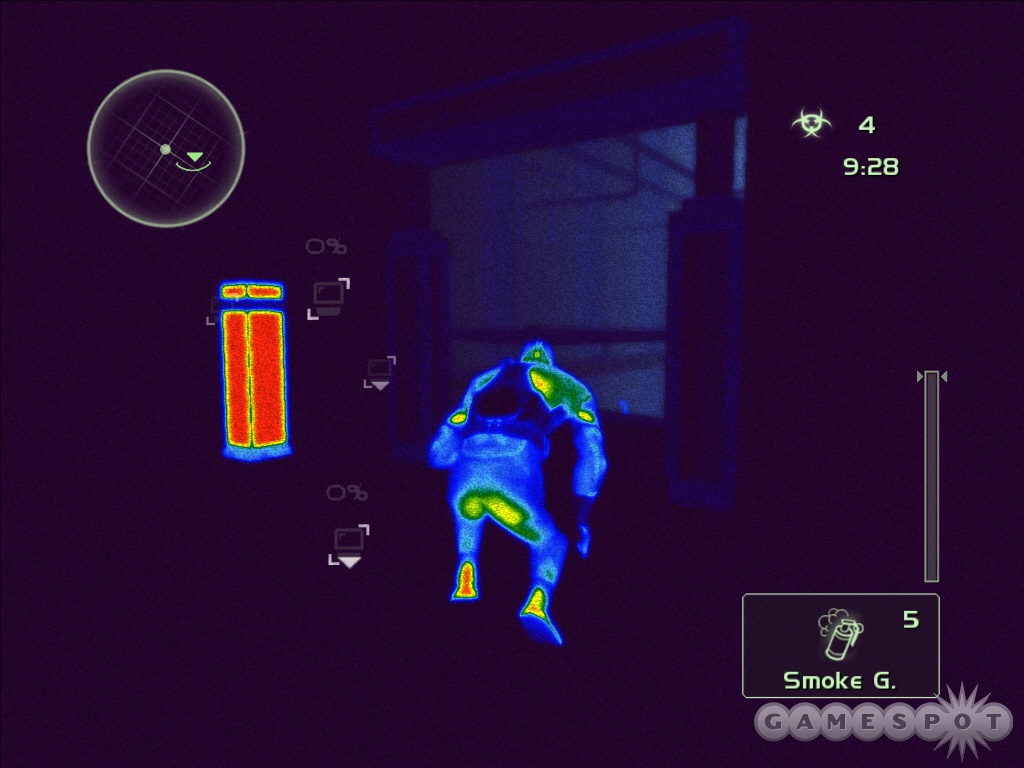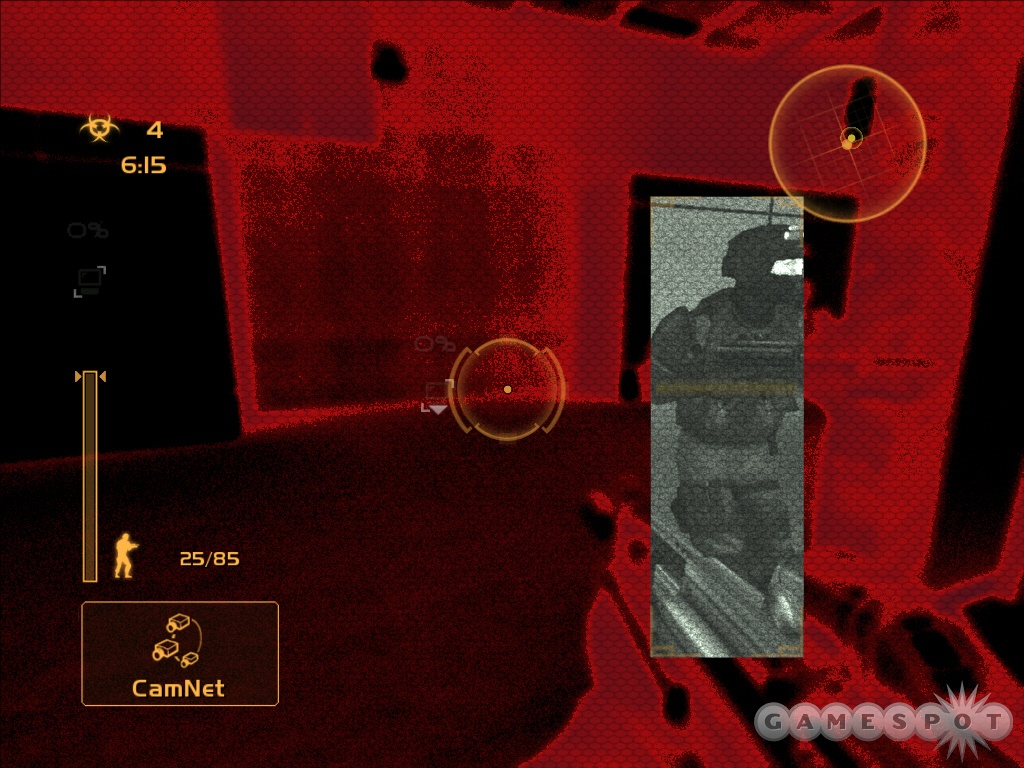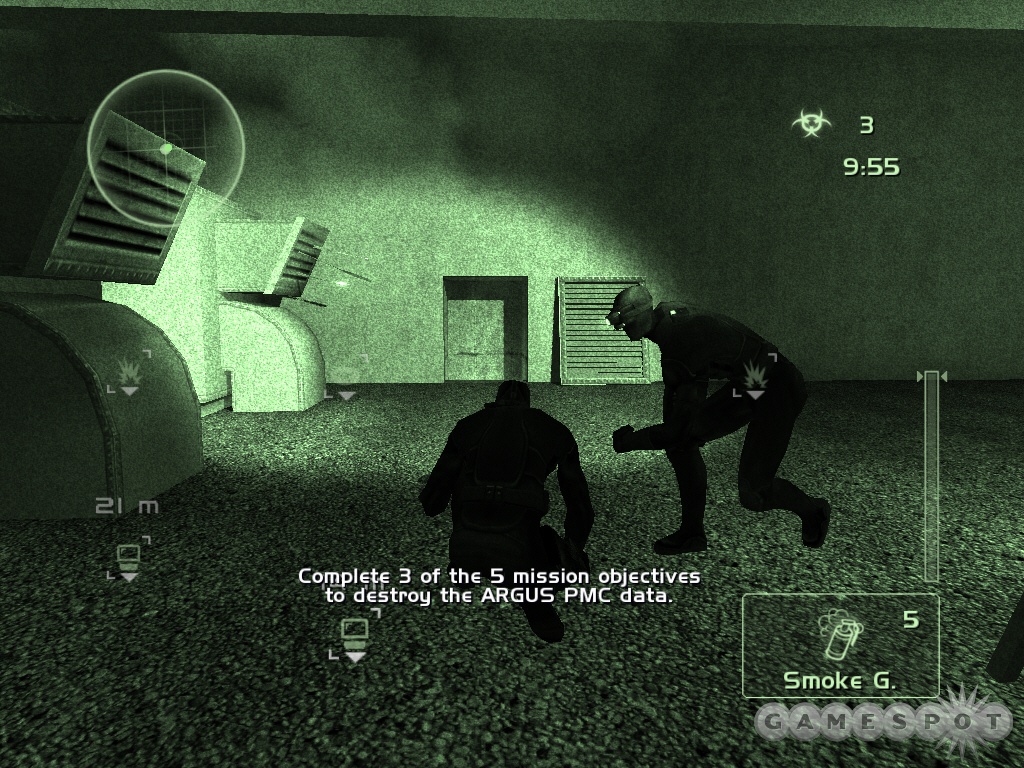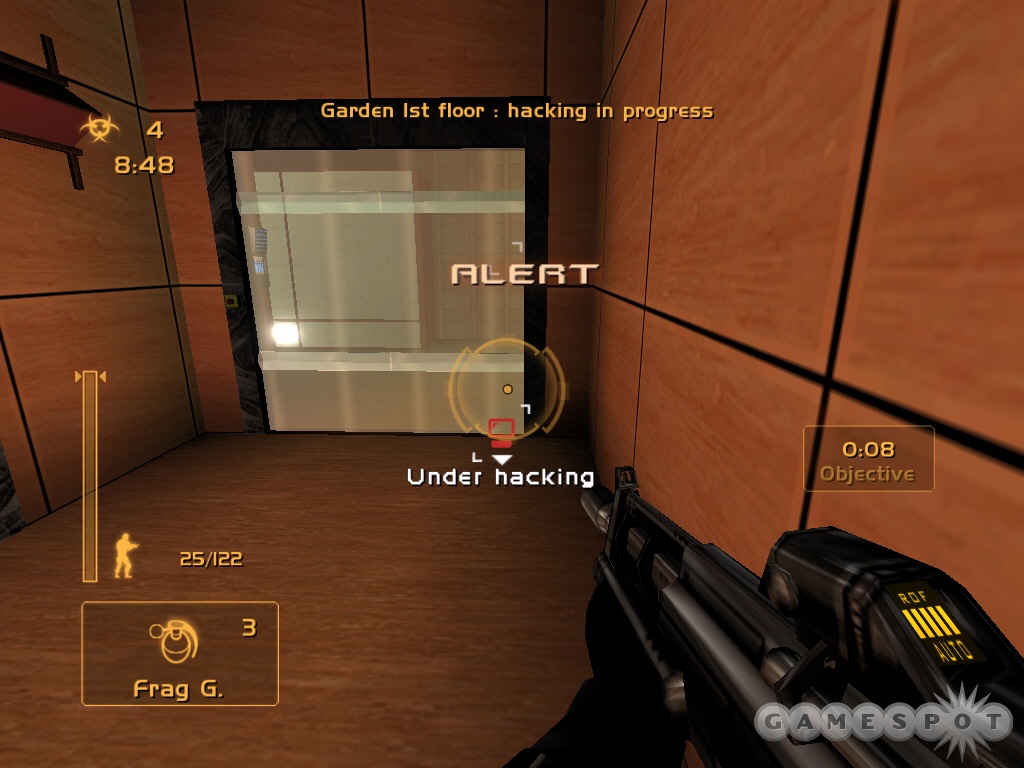Splinter Cell: Chaos Theory Hands-On - Multiplayer
We get a chance to play the multiplayer beta to see how spies and mercenaries interact online.
Tom Clancy's Splinter Cell Chaos Theory was one of the surprise games of E3 last year, mainly because no one expected it. After all, Splinter Cell Pandora Tomorrow had just been released. However, with Chaos Theory, the original Splinter Cell development team at Ubisoft Montreal secretly went to work to sharpen government agent Sam Fisher's gameplay to a razor's edge. With the game finally expected to ship this spring, Ubisoft recently launched the multiplayer beta of the game, and we got our hands on it to check it out. It should be noted that the multiplayer beta mainly features the story mode, which is almost identical to the same mode in Splinter Cell Pandora Tomorrow. The new cooperative mode that dazzled the audience (and us) at E3 last year is not included in this beta, so we'll have to wait a bit longer to see how it turns out.

The multiplayer beta actually features three different modes: traditional deathmatch, disk hunt, and story. Story mode pits spies versus mercenaries in a race to either hack into a series of computers scattered about a level or defend them from being hacked. Once again, you can choose to play either as a Shadownet spy or as a gun-toting mercenary, which affects how you play the game quite a bit. The spies play from the conventional third-person view used for the single-player game, whereas the mercs play from the traditional first-person view used for most shooters. As such, each side has its advantages and disadvantages, and each side plays out a tense game of lethal hide-and-seek.
The Shadownet operatives have many of the same moves and abilities that Sam Fisher has in the single-player game. Clad in their sleek black bodysuits and sporting night vision goggles, they can shimmy up pipes, crawl into air ducts, and leap up to grab ledges to then haul themselves up. They can also run very fast, which is especially useful when they're caught in the open by mercenaries. Though Shadownet operatives don't get to carry a conventional firearm, they do get to carry a tazer rifle that lets them temporarily shock a mercenary or knock out a surveillance camera. They also have plenty of grenades. Smoke ones are useful for masking an escape, chaff grenades temporarily disrupt a merc's enhanced vision and other detection devices, and flash grenades can blind a merc. However, perhaps the coolest gadget is the camo suit, which allows a spy to cloak himself. The camo suit works quite a bit like the Predator's suit in the 1987 movie Predator. It won't work in certain situations, such as when you're moving too quickly or if you're in the rain, and it causes a slight distortion in the air. As a result, you're not completely invisible.
While Shadownet spies don't have access to lethal weapons, their bodies can be just as lethal. Once again, spies can knock out mercs, mainly by perching themselves on high places and then falling on them. Or, if you can sneak up behind a merc, you can grab him in a choke hold and either knock him out or break his neck. One tactic that we encountered several times in the beta occurred when we, as the mercs, would chase down a fleeing spy. The spy would run into a hallway and toss a smoke grenade to obscure his location. We would then run into the hallway and stop when we realized that we'd lost the spy. But by then it was too late, because the spy would cloak himself before we'd run by. Then he'd just come up behind us. The lesson in this is don't be too eager in the pursuit.

It may sound like spies have all the fun, but the mercenaries have plenty of cool aspects to them as well. Mercs lack the mobility and athleticism of the Shadownet operatives, meaning they can only operate in rooms and hallways. They lack the ability to both climb up after Shadownet spies and chase them down into air ducts. To compensate for this, though, they get plenty of firepower in the form of an assault rifle that's capable of also hurling grenades into air ducts and other inaccessible locations. One of the most terrifying moments we had as a spy was when a merc started firing through ceiling tiles, causing bullet holes to appear all around our spy.
Spy Games
Mercs also have other neat gadgets, such as mines that can both stick to walls and serve as trip wires to catch fleeing spies and a gas mask to defend against gas grenades. They also can tap into a building's camera network to monitor other areas. And the two enhanced vision modes from Pandora Tomorrow, motion tracking and electromagnetic vision, are still there as well. In a related nice touch, a Shadownet operative can tell what vision mode a merc is employing by gauging the tint of the merc's visor. Mercs also have access to a tazer, which is useful for stunning a spy to keep him from running away. Mercs have a flare launcher as well, which helps light up the many dark corners of the game.

There are only two levels in the beta, one of which is an updated version of the museum level found in Pandora Tomorrow. The new level is set in a Japanese club in downtown San Francisco, and it features plenty of hiding spots and hard-to-get areas. The bottom floor of the club is home to an indoor Japanese garden, complete with a bubbling fountain and a creek, and a spy can always try to hide underneath the elevated walkways. An adjacent hallway also offers plenty of rooms and a sauna to hide in. The upper level is home to a large conference room, as well as offices full of computers that will have to be hacked by the spies and defended by the mercenaries. Visually, the multiplayer looks very sharp. The new lighting and shadowing engine seems to be in effect, and the cool silhouette effects that we saw in the single-player E3 demonstration are also at work in multiplayer. In one scene in the Japanese sauna, the silhouette of a mercenary was even visible through its paper walls, so you'll have to be careful of accidentally revealing yourself that way.
The action in the multiplayer beta is tense, no matter what side you play. As the spy, you have to constantly deal with the fact that you are vastly outgunned by the mercenaries...not to mention that you have to deal with all the cameras and motion detectors throughout the level. And if that weren't enough, the timer forces you to act to achieve your objectives in time. However, it isn't that much easier playing as the mercenaries, because you have to worry about defending multiple objectives (which are spread out over the level) against a nimble and fast foe. You'll be standing on one floor when an alarm on an entirely different floor goes off, which forces you to make a decision to either try and chase down the spy or stay put in case the alarm is a diversion. And it can be a bit frustrating to catch a spy in the open only to have him get away. It's even worse if the player who's playing the spy has voice support, because he'll taunt you afterwards.

While it doesn't appear to offer that much new in terms of gameplay, the story mode in Chaos Theory promises to be just as tense and exciting as the multiplayer in Pandora Tomorrow. Furthermore, we can definitely look forward to some new levels to play hide-and-seek in. And keep in mind that we haven't played the anticipated co-op mode yet. The idea of being able to work with a buddy to perform outrageous feats, such as using each other as human ladders to reach otherwise inaccessible places, has us excited. And while we must admit that we were disappointed when Chaos Theory slipped from its holiday 2004 release to a spring 2005 release, judging from what we've seen, it looks like the wait will be well worth it. Splinter Cell Chaos Theory is scheduled to ship for the PC, Xbox, PS2, and GameCube this March.
Got a news tip or want to contact us directly? Email news@gamespot.com
Join the conversation